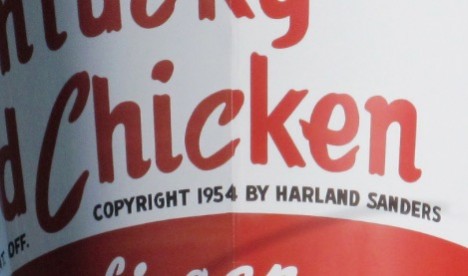Escaping the Bonds of Fast Food Chicken Addiction
(CC BY-NC 2.0) rocor/Flickr Disclaimer: I don’t eat chicken, but some of my best friends do. I am not talking here about the regular grocery store chicken or the happy free ranging bird that you prepare yourself. I am addressing fast food chicken. For the first time in a century, Americans are eating more chicken than beef, and much of this is in the form of fast food chicken, with purveyors of the All-American burger adding chicken items like crazy to their menus. I imagine chickens are crossing the road in record numbers in an attempt to escape this carnage, but to no avail because chicken eaters want their chicken, and they want it now. So what’s the problem? You are getting


(CC BY-NC 2.0) rocor/Flickr
Disclaimer: I don’t eat chicken, but some of my best friends do. I am not talking here about the regular grocery store chicken or the happy free ranging bird that you prepare yourself. I am addressing fast food chicken.
For the first time in a century, Americans are eating more chicken than beef, and much of this is in the form of fast food chicken, with purveyors of the All-American burger adding chicken items like crazy to their menus.
I imagine chickens are crossing the road in record numbers in an attempt to escape this carnage, but to no avail because chicken eaters want their chicken, and they want it now.
So what’s the problem?
You are getting ripped-off by the fast food industry because what they are calling chicken is not all that you think.
It started in the early 1950’s when Col. Harland Sanders, who had been selling his fried chicken at his gas station and restaurant in Corbin, Kentucky, decided to sell his secrets to Pete Harman of South Salt Lake, Utah, who then opened the first Kentucky Fried Chicken outlet in 1952.
If any of you have had the KFC Original Recipe you may remember a somewhat greasy piece of recognizable chicken with a thin fried coating. From here, because of competition from other franchises, KFC introduced Extra Crispy chicken in 1972. We still got the same piece of chicken only with a lot more unhealthy fried batter surrounding it.
Enter the fried chicken sandwich
With the brilliant capitalistic introduction of the fried chicken sandwich, fast food chicken was never the same again. Chicken is relatively expensive, while fat and batter are not. The less chicken and the more fried batter in the product the more profits for the company.
It didn’t stop there, because like a fried snowball rolling downhill to the bank (Did I really write that?), the fast food industry, with some help from Tyson Foods, created the ubiquitous Chicken McNugget in 1979. This disreputable product had even a larger ratio of fried batter to chicken. Now we have chicken strips, tenders, fingers, and most recently chicken fries, all the while with an increasing ratio of fried batter to chicken in the product that you are buying and eating.
So now that you know all this, you can just stop eating these products. Good luck with that.
You see, the fast food industry has found through years of covert research that by surrounding your chicken with layers of fat, sugar, and salt they can keep you coming back for more, because, although no one has ever been addicted to a chicken except perhaps a lovelorn rooster, plenty of people become addicted to the salt, sugar, and fat combination. The industry calls it “palatability,” which refers to food that has the capacity to stimulate the appetite and drive us to eat more. These high sugar-salt-fat coatings produce rewarding opioids in our brain and drive us to want to have it. And if that isn’t enough, much of the “chicken” inside the coatings is infused with sugar, salt, and fat solutions beforehand at the factory.
The end result of this culinary subterfuge is a concoction that is over 50 percent fat, sugar, and salt by volume, and even getting higher with the newer products. This doesn’t even include the fat, sugar, and salt topping that we add to it.
Can we reverse this behavior?
The key is to decrease your exposure to the substances that you are addicted to, in this case, salt, sugar, and fat, and decrease all of them at once, as they seem to have a synergistic effect when consumed together. What will happen, if you do this, is that you will eventually come to appreciate food that contains a much lower dose of these substances.
Additionally, I do not support cheat days, or letting it go for the holiday season, or any other way of eating that does not decrease your addictive exposure all of the time, in the beginning of the healing process. If you continue to intermittently reinforce the addictive behavior, it will never be controlled.
Dealing with an addiction is not an easy matter, especially when the addictive substance is necessary for life, but we can modify the addiction, and we can manage it by retraining ourselves, and developing healthier habits. Habits can be stronger than addiction.

By Dr. J, a maxillofacial surgeon living in Florida. Dr. J has travelled to Haiti to treat indigent patients and has taught as an associate professor at a Florida dental college. In his spare time Dr. J is a dedicated runner as well as a pilot who flies his Piper Cherokee Arrow throughout Florida. He has a black belt in karate. Dr. J has written for CalorieLab since 2007.
Escaping the Bonds of Fast Food Chicken Addiction is a post from:
SOURCE: – Read entire story here.







